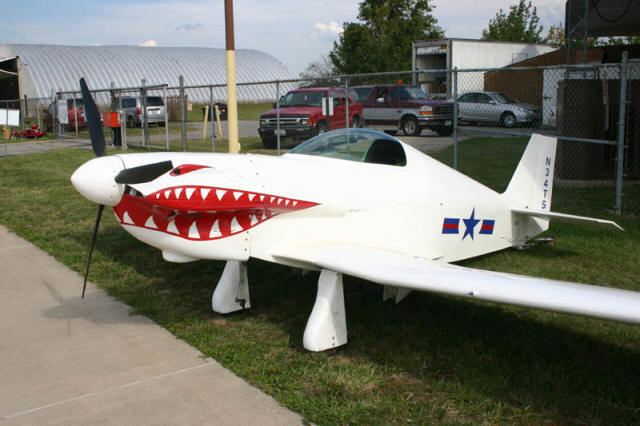Top speed 322 km/h | Engine type Air-cooled engine | |
 | ||
Manufacturers Rand Robinson Engineering, nVAero | ||
The Rand Robinson KR-1 is a single-seat, single-engine sport aircraft designed in the United States in the early 1970s and marketed for homebuilding. A two-seat version is marketed as the KR-2. It is a low-wing cantilever monoplane of conventional design with an enclosed cockpit and tailwheel undercarriage. As originally designed, the main undercarriage units of the KR-1 and basic KR-2 were manually retractable, folding backwards into the wings, while the KR-2T tandem-seat version had fixed undercarriage. However, some builders choose fixed tailwheel or even fixed tricycle undercarriage for KR-1s and KR-2s.
Contents
Kits for the KR-1, KR-2 and KR-2S are supplied by nVAero of Mission Viejo, California, United States.
Design and development
The KR-1's wings have a two-spar construction; the front spar of spruce, and the rear spar from spruce and plywood. The wing ribs are formed from polyurethane foam, and the space around them filled with the same material before the entire wing structure is covered with fabric impregnated with epoxy resin. The fuselage is built around a wooden framework, the lower part skinned in plywood and the upper part built up of polystyrene foam covered in epoxy-coated fabric. KR-1 builders have the choice of three different upper fuselage configurations: the "fastback" with a turtledeck behind the cockpit, the "pursuit" with a fighter-style bubble canopy, and the "sportsman" with an open cockpit and a small fairing behind it for rollover protection.
The design has proved popular, with 6,000 sets of KR-1 plans and 4,500 sets of KR-2 plans sold by 1979. From these, over 200 KR-1s and 350 KR-2s were flying by 1987. Plans and kits were still available in 2011.
Variants
Aircraft on display
Specifications (typical KR-2)
General characteristics
Performance
